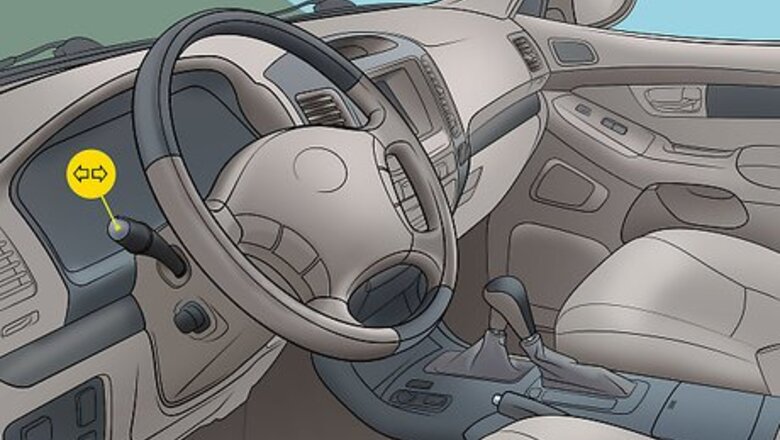
views
- Activate your turn signal whenever you’re rounding a corner or merging into traffic. Turn on the signal 100 feet (30 m) from a turn or 5 seconds before merging.
- Move the signal lever down for a left turn and push it up to indicate a right turn. Shift the lever to the middle position if it doesn’t automatically turn off afterward.
- Alternatively, put your left arm straight out horizontally for a left turn, or bend your elbow and hold your hand up for a right turn if your turn signals don't work.
Using Turn Signals at a Turn
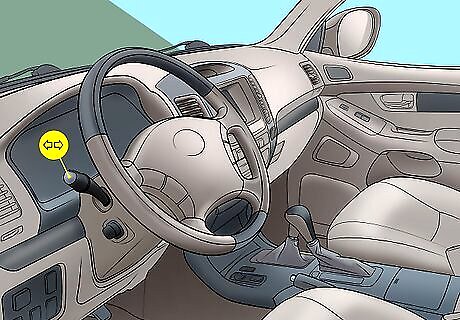
Find the turn signal lever on the left side of the steering column. The turn signal is a long lever behind your steering wheel on the left side. When you move the lever up or down, the signal lights on either the left or right side of your car will flash. Note: The turn signal only activates the signal lights on your vehicle if it’s running.
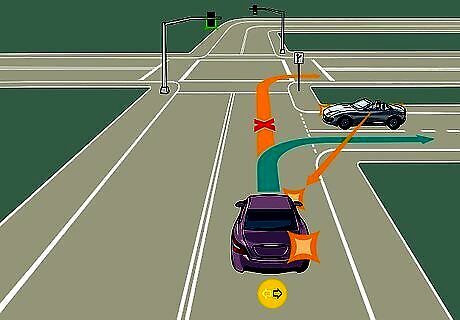
Use your signal 100 feet (30 m) before making a turn. Wait to activate your turn signal until there are no other streets or alleys between you and where you’re turning. If you put on your car blinkers too soon, a person may think you’re turning sooner than expected, which could lead to being cut off in traffic or an accident. Turn on your signal before braking to let other drivers know why you are slowing. EXPERT TIP Ibrahim Onerli Ibrahim Onerli Driving Instructor Ibrahim Onerli is a Driving Instructor and the Manager of Revolution Driving School in New York City. His mission is to make the world a better place by teaching safe driving. Ibrahim trains and manages a team of over eight driving instructors. He specializes in teaching defensive driving and stick shift driving. Ibrahim Onerli Ibrahim Onerli Driving Instructor Give other drivers plenty of notice before your turn. By law, you need to start signaling about 100 feet in advance of your turn, but it's best if you start signaling about a half a block before you plan to switch a lane or make a turn.
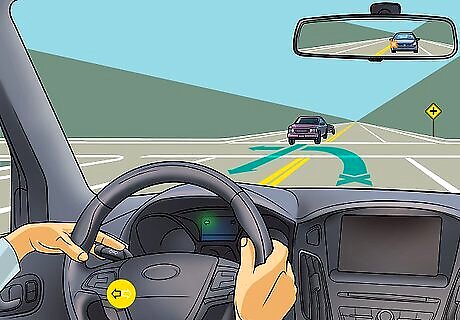
Push the lever down to turn on the left turn signal. Make sure you’re in the left-turn lane or the leftmost lane. Push the turn signal lever down gently with your left hand. When the lever locks into place, a flashing left arrow will blink on your dashboard. The signal makes a ticking sound that clicks in time with the flashing light to indicate that the signal is operating properly. Keep your right hand on the wheel while flicking the signal lever down with your left hand. Usually, you can flick the lever down with a finger so you don’t have to fully let go of the wheel. If your car blinkers aren’t working properly, use a hand turn signal to alert other drivers. Roll down your window and hold your left arm straight out horizontally.

Move the lever up to turn on the right turn signal. Move into the right-turn lane or the rightmost available lane, and move the lever up with your left hand. Once you move the lever up into position, a flashing right arrow will appear on your dashboard paired with a clicking sound. If your lights aren’t working properly, roll down your window to do a hand turn signal. Put your left arm out the window, and bend your elbow to a 90-degree angle so your hand is straight up. If you’re driving in a roundabout, put on your right turn signal just before the exit you want to get off on.
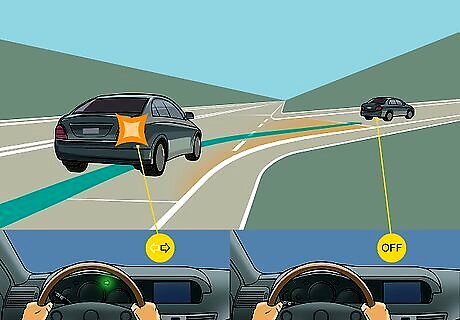
Check that your turn signal shuts off after completing your turn. Normally, your turn signal will automatically turn off after you finish turning, but it may stay on if the turn was less than 90 degrees. Check your dashboard to see if the light is still flashing or if there’s still a ticking sound. If there is, push the signal lever back to the middle “off” position. Leaving your turn signal on after finishing your turn can confuse other drivers who are expecting you to make a turn.
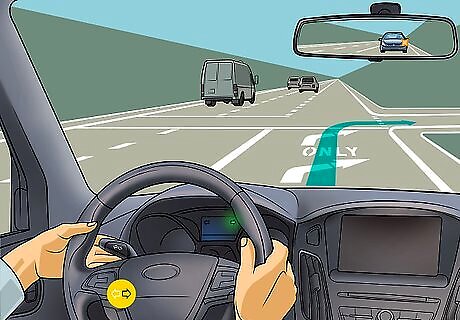
Use your signal even if you’re in a turning lane. While it might seem unnecessary to use your signal in a dedicated turn lane, it’s still important to put your blinkers on. Your turn signal still alerts oncoming traffic and drivers who are not familiar with the area which direction you’re going so you stay safe. Many state laws require you to put on your signal whenever you’re turning, so it’s good to get in the habit of using it each time.
Using Turn Signals to Merge with Traffic
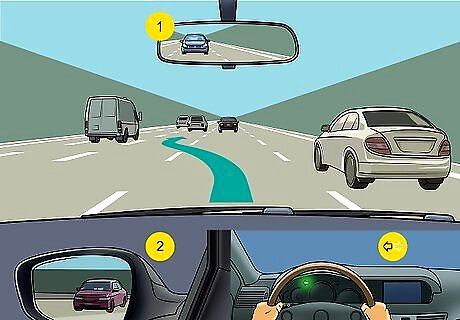
Turn on your turn signal whenever you want to change lanes. If you need to move to a different lane to pass vehicles or make a turn, activate your signal when there’s a gap in traffic. Put on your signal about 5 seconds before you plan on merging so vehicles have time to slow down and make room. To move into the right lane, push your turn signal lever up. To move into the left lane, push your turn signal lever down. When the lane is all clear, turn your wheel slightly toward the lane. Once you’re completely within the boundaries of the lane, move your left hand to your turn signal lever and switch it off. Avoid crossing multiple lanes of traffic after only activating the turn signal once. Instead, wait for about 5 seconds in your new lane so the next lane knows you’re planning to merge.
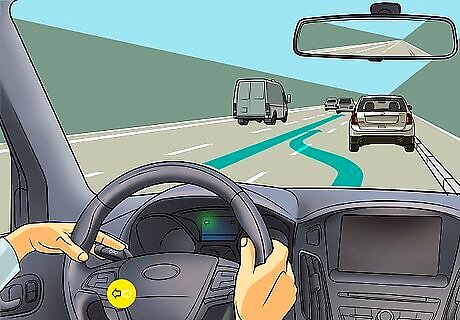
Put on your turn signal when you’re pulling out from the curb. Before leaving a parking spot on the side of the street, put on your turn signal to alert traffic which direction you want to merge. If you are parked on the right side of the street, activate your left-hand turn signal by pulling down on the signal lever. If you’re merging into a lane on your right, then use right turn signal. Before you pull out from the curb, check your side mirror to ensure there isn’t any oncoming traffic in the lane. Then, turn your wheel hard to the left and accelerate gently to pull out. Your turn signal may not turn off automatically, so push the lever back into the middle “off” position.
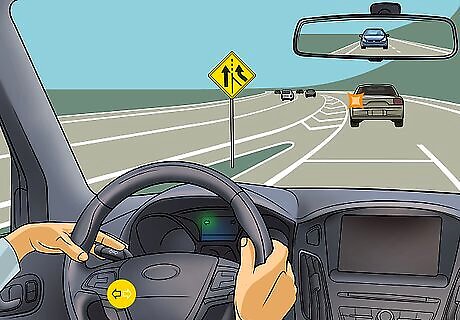
Active your turn signal when you’re merging onto a highway. When merging onto the highway, accelerate quickly from the entrance ramp to match the speed of other vehicles. When you’re halfway along the ramp, put on the turn signal on the side you plan on merging with. While cars should slow down or move over so you can merge, be cautious and check your mirrors before changing lanes. Once you’ve found a gap between vehicles, merge quickly onto the lane. Only spend about 2-3 seconds to change lanes and enter the highway.
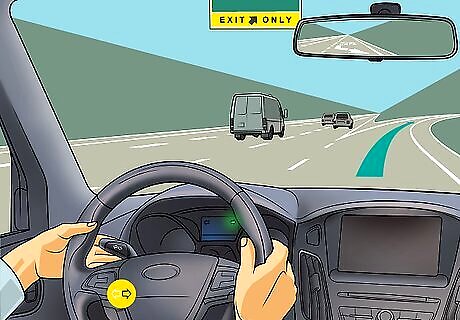
Flip on your turn signal when you’re exiting the highway. Pay attention to the highway signs and change lanes so you’re in the correct lane for your exit. Use the turn signal that’s on the same side as your exit, and turn it on when you’re about 300 feet (91 m) from the off-ramp. Only once you’ve hit the off-ramp, use your brakes to slow down. After you get off the highway, immediately adjust your signal for which direction you’re going at the end of the ramp.


















Comments
0 comment